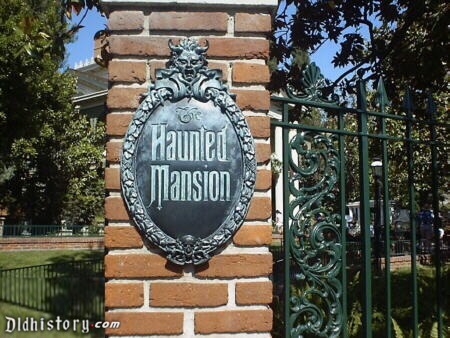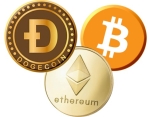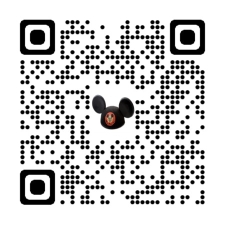How Club 33 Really Got Its Name It Is Not What You Think
ID:
TMS-5362
Source:
Orange County Register
Author:
Brady Macdonald
Dateline:
Posted:
Status:
Current
The official version of the Club 33 origin story has a new twist involving 33 corporate sponsors that helped build Disneyland thanks to a 300-page history of the Anaheim theme park that delves into the legend and lore of the exclusive private club in New Orleans Square.
A new history of Disneyland written by the Historic Resources Group for the 17,000-page DisneylandForward Environmental Impact Report offers new insights into the origins of the Club 33 name. The EIR was paid for by Disney and released by the city of Anaheim.
Disneyland’s official backstory always held that the Club 33 name came from the address of the VIP lounge in New Orleans Square: 33 Royal Street.
If you look closely, each of the businesses in New Orleans Square has a distinct address along Royal, Orleans and Front streets.
Club 33’s former entrance used to be located between the Blue Bayou restaurant at 31 Royal Street and Le Bat en Rouge at 35 Royal Street. After a major remodel, the Club 33 entrance was relocated in 2014 to the Court of Angels. The new Club 33 entrance is now closer to Orleans Street beyond Eudora’s Chic Boutique that took over the former Le Bat en Rouge location.
Now it seems the addresses on Royal Street may have been arranged to accommodate the Club 33 name rather than the club adopting its name from its street location.
“The number ‘33’ came from the number of original sponsors of rides and attractions in the park,” according to the Historic Resources Group in the DisneylandForward EIR. “It was meant as a place where the sponsors could conduct business lunches.”
Walt Disney created Club 33 as an elegant, exclusive hangout for well-heeled VIPs. For decades, Club 33 was famously the only place that served alcohol in otherwise dry Disneyland.
“Members consisted mostly of Disneyland’s corporate partners and local Orange County businessmen,” according to the EIR.
The private, fine-dining club on the second story of New Orleans Square shared a commercial kitchen with the Disney family apartment at 21 Royal Street just above the Pirates of the Caribbean attraction. Disney died in 1966 before the apartment was completed.
Disneyland’s 33 original corporate sponsors helped fund the construction of the Anaheim theme park in 1955 and the years that followed by attaching their company names to rides, attractions, shops and restaurants.
Walt Disney initially had trouble persuading local and national companies to lease commercial space within his theme park — a novel and untried concept in the early 1950s. The unsuccessful fundraising pitches turned a corner and caught fire when a Disney advertising executive came up with the idea of sponsorships.
Chicago meatpacker Swift & Co. became the first Disneyland sponsor to sign on as the operator of the Market House on Main Street USA.
“That success opened the floodgates to 40 other sponsorships including Santa Fe Railroad Company, Bank of America, Richfield Oil, Upjohn and Carnation,” according to the EIR. “Sponsors built out their own shops with required exhibition space and their rental fees generated much needed income.”
Among the original 33 sponsors were Pepsi Cola (Golden Horseshoe), Coca-Cola (Refreshment Corner), Carnation (Carnation Cafe), Ken-L Ration (Disneyland Kennel Club), Chicken of the Sea (Chicken of the Sea Pirate Ship and Restaurant), Frito-Lay (Casa de Fritos) and Aunt Jemima (Aunt Jemima Pancake House).
Many of the original 33 sponsors attached their names to Disneyland rides and attractions: Monsanto (Adventure Thru Inner Space), General Electric (Carousel of Progress), United Airlines (Enchanted Tiki Room), Bell Telephone (Circle-Vision 360), Goodyear Tire & Rubber (PeopleMover), Atchison, Topeka & Santa Fe (Disneyland Railroad), McDonnell Douglas (Rocket to the Moon) and Lincoln Savings & Loan (Great Moments with Mr. Lincoln).
Other sponsors among the original 33 included Bank of America, Eastman Kodak, Timex, Atlantic Richfield, Global Van Lines, Hallmark Card, Welch Grape Juice, Hills Bros. Coffee, Wurlitzer, Upjohn, C&H Sugar, Pendleton Woolen Mills, Sunsweet Growers and Sunkist Growers, according to the unofficial Disneyland Club 33 fan website.
Disneyland bills Club 33 as exclusive, world class and shrouded in mystery. Club 33 was inspired by the VIP lounges Walt Disney experienced at the 1964 New York World’s Fair where It’s a Small World and Great Moments with Mr. Lincoln first debuted. The private Disneyland club opened in May 1967, a few months after Disney’s death in December 1966.
Club membership costs $25,000 to join with $10,000 annual dues, according to Eater. The waiting list numbers in the hundreds and it can take more than a decade to receive an invitation. Tom Hanks, Christina Aguilera and Elton John — who all have professional Disney connections — are reportedly among the celebrity club members, according to Eater.
Attractions Referenced In This Article:
Restaurants Referenced In This Article:
Shops Referenced In This Article:
Lands Referenced In This Article:






